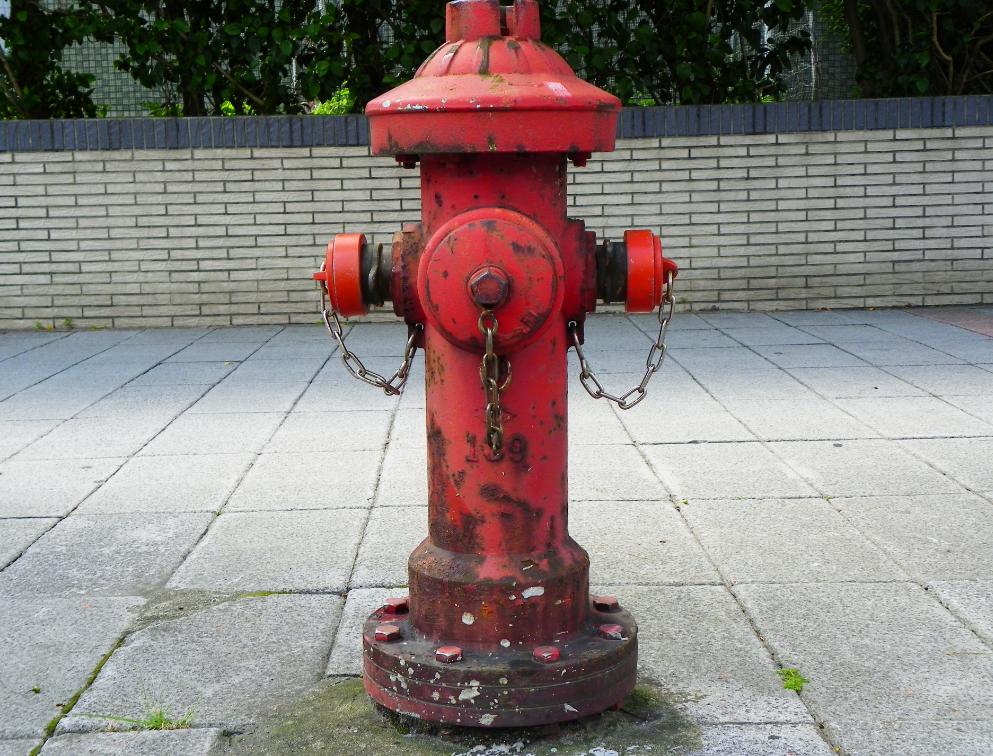The Secret, Broken Language of Fire Hydrants

We don’t think of fire hydrants very often — they sit idly in the backgrounds of our streets and neighborhoods, with the hope that they’ll never be needed. But when they’re needed, fewer things are more important — and they better work.
Unfortunately, using a hydrant isn’t as simple as opening the cap and plugging in a hose. On the perfectly-named FireHydrant.org, a Water Supply Officer for a California fire district explains:
Primarily, we need to know how much water is available from the closest hydrant so that we may select the appropriate size hose lines for the size and complexity of the fire, but not select lines which would exceed the capacity of the hydrant and thus be ineffective. This information is known as “available flow.”
We also need to know the water pressure in each hydrant so that we can immediately implement the correct pumping operation at the supply hydrant.
And, it should go without saying, the hydrant has to be functioning in the first place.
It’s difficult at best to look at a hydrant and glean this information. Thankfully, the National Fire Protection Association, or NFPA, has a “code and standard” specifically designed to solve this problem. That specification, known NFPA 291, contains a section (5.2, if you want to look it up) titled “Marking of Hydrants” which states, in part, that tops and nozzle caps of hydrants be painted according to a specified coloring scheme. Those with a flow rate of 1,500 gallons-per-minute (GPM) or greater should be painted light blue; between 1,000 and 1,500 GPM should be green; between 500 and 1,000 should be orange, and anything below 500 should be red. This way, a firefighter can immediately register whether a nearby hydrant will get the job done, and if so, which tools and tactics to use.
Unfortunately, a large number of municipalities and fire departments don’t follow NFPA 291 or its general idea of having color-coded hydrants; the color of the hydrant is often entirely meaningless. But in some cases, localities try and adopt NFPA 291 or variants thereof — and end up making things worse. For example, if you visit some parts of rural Texas, it may look like all the hydrants are broken.
The culprit is Texas Health and Safety Code § 341.0357, a well-intentioned law passed at the state level, combined with a very literal reading of the law’s requirements at the local level. The law, available here, is titled “Identification Requirement for Device With Appearance of Fire Hydrant That is Nonfunctioning or Unavailable for Use in Fire Emergency.” Basically, if you have something that looks like a hydrant but isn’t one or, importantly, can’t effectively be used to help put out a fire, the law requires you to paint the hydrant black.
Like most well-written laws, this one defines a lot of terms. In this case, it spells out what “nonfunctioning” means: “a device is considered to be nonfunctioning if the device pumps less than 250 gallons of water per minute.” Given the NFPA standards, that seems reasonable.
But for the Green Valley Special Utility District, a rural fire department in Guadalupe County (located about 30 miles west of San Antonio), the law caused a problem. The general manager of the utility district told local media that they “can’t guarantee adequate flow at all times” — power failures, droughts, and the like could cause a hydrant to temporarily not hit the 250 GPM requirement. That could open the district up to liability, so they decided to play it safe, and just paint all of its hydrants black. And they weren’t alone — officials in Kaufman County (near Dallas) and Smith County (pdf, and it’s also near Dallas, but not quite as near) also decided to avoid liability by painting all their hydrants black.
That flies in face of the spirit of the law, of course — now, firefighters in those areas can’t reasonably interpret the black paint to mean anything whatsoever. And to add insult to injury, it costs about $50 to paint a hydrant black — so in order to comply with the law (and make things worse in the process), these areas have to also fork over thousands of dollars for the privilege of making the hydrants impossible to read.
Bonus fact: Another problem with fire hydrants is access — if the firefighters can’t get to the pump, it’s not going to be very useful. This is a common problem in the winter in areas that get a lot of snowfall, especially because snowplows tend to dump snow from the street onto the curb, burying hydrants in the process. To combat this, many areas have “adopt-a-hydrant” programs, where local businesses and residents volunteer to take responsibility for the hydrants in their area, shoveling away snow when the storm strikes.
From the Archives: As the Ball Doesn’t Bounce: The bonus item is about a much-revered fire hydrant.
Related: A “scented fire hydrant for pet potty training.” Mixed reviews, and that may be sugar-coating it a bit, but I really want to know what scent they used.
